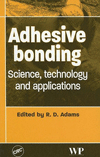Shedding Light on the Alternative Energy Industry
The
alternative energy industry has turned to bonding and sealing as a way
to
engineer, design, protect, and fabricate new devices for the production
of
clean, efficient electrical energy.

 Renewable
and alternative energy sources are popular buzzwords in the 21st century, and
they are becoming more familiar to the adhesive and sealant industry as
chemical feedstocks remain in short supply and prices increase. The move is on
to reduce energy costs, become less dependent on fossil fuels and lower our
“carbon footprint.” It is inevitable that adhesive and sealant products develop
a more active participation in this new growth opportunity.
Renewable
and alternative energy sources are popular buzzwords in the 21st century, and
they are becoming more familiar to the adhesive and sealant industry as
chemical feedstocks remain in short supply and prices increase. The move is on
to reduce energy costs, become less dependent on fossil fuels and lower our
“carbon footprint.” It is inevitable that adhesive and sealant products develop
a more active participation in this new growth opportunity.
The alternative energy industry has turned to bonding and sealing as a way to engineer, design, protect, and fabricate many new and exciting devices to produce clean, efficient electrical energy. This effort has been supported by new federal government incentives to promote growth in a recessionary economy.
Electrical power generation has been dominated by coal-, gas- or diesel-fueled steam turbines, as well as water-powered generators, for the past two centuries. Nuclear fission entered the market in the 1960s but has not been readily accepted due to its high installed cost and safety concerns. Recent improvements in technology, engineering and materials have opened the door to new sources for power. Many are quite promising and are being adopted at an ever-increasing rate. The two most popular developments are wind and photovoltaic (solar) power. A list of conventional and popular alternative electrical energy sources is provided in Figure 1.
 The
energy sector is further divided between consumable and renewable resources.
Presently, consumable resources make up 86% of the electrical energy produced
in the U.S., while only 14% is generated by renewable resources. Water (hydro)
power is a big portion of the renewable resources segment, followed by wind,
solar (photovoltaic) and others (see Figure 2). Electrical energy produced by
wind turbines is ahead of the other alternatives in terms of both cost and
efficiency.
The
energy sector is further divided between consumable and renewable resources.
Presently, consumable resources make up 86% of the electrical energy produced
in the U.S., while only 14% is generated by renewable resources. Water (hydro)
power is a big portion of the renewable resources segment, followed by wind,
solar (photovoltaic) and others (see Figure 2). Electrical energy produced by
wind turbines is ahead of the other alternatives in terms of both cost and
efficiency.
A more detailed share of the 2009 energy market by generation method is provided in Figure 3. Many options are available. The final deciding factors for new investment will be a combination of both the construction cost and the cost/kW of power produced. See Figure 4 for a comparison.

This application is the largest and most interesting consumer of adhesives. Epoxies represent more than 70% of the adhesive demand. Exterior coatings for the turbine pods, steel support structure and exterior blade surfaces are one- or two-part polyurethanes. Sealants represent a smaller use.


The market is still new and subject to vagaries in funding, consumer acceptance and site installation approvals. Most of the alternative energy options are in their early development stages and depend on the availability of funding, production support equipment (e.g., batteries), distribution networks, local property restrictions, and other governmental regulations. The future for alternative energy will need consumer acceptance and government support, along with the development of new products, to meet ever-expanding needs.


Figure 1. Conventional and Popular Alternative Electrical Energy Sources
The alternative energy industry has turned to bonding and sealing as a way to engineer, design, protect, and fabricate many new and exciting devices to produce clean, efficient electrical energy. This effort has been supported by new federal government incentives to promote growth in a recessionary economy.
Electrical power generation has been dominated by coal-, gas- or diesel-fueled steam turbines, as well as water-powered generators, for the past two centuries. Nuclear fission entered the market in the 1960s but has not been readily accepted due to its high installed cost and safety concerns. Recent improvements in technology, engineering and materials have opened the door to new sources for power. Many are quite promising and are being adopted at an ever-increasing rate. The two most popular developments are wind and photovoltaic (solar) power. A list of conventional and popular alternative electrical energy sources is provided in Figure 1.

Figure 2. Consumable vs. Renewable Energy Resources
A more detailed share of the 2009 energy market by generation method is provided in Figure 3. Many options are available. The final deciding factors for new investment will be a combination of both the construction cost and the cost/kW of power produced. See Figure 4 for a comparison.

Figure 3. Energy Market by Generation Method (2009)
Wind Turbines
Adhesives, sealants and coatings are playing an important role in the growth of wind turbines, which represents the largest consumer of formulated chemical products in the sector. The manufacture of wind turbines requires large blades; some are nearly 60 m (183 ft) long, with a total swing diameter of 120 m (366 ft). These blades are fabricated in two halves from resin and fabric laminations. When molded, the half-shells are bonded and each blade can consume up to 450 kg of epoxy or methyl methacrylate (MMA) adhesive and weigh as much as 15-20 tons.This application is the largest and most interesting consumer of adhesives. Epoxies represent more than 70% of the adhesive demand. Exterior coatings for the turbine pods, steel support structure and exterior blade surfaces are one- or two-part polyurethanes. Sealants represent a smaller use.

Figure 4. Cost Comparison
Solar PV Panels
Fabricated from silicon wafers, glass, plastics, and metal frames, solar panels consume formulated adhesives, sealants, and coatings. Hot-melt adhesives are used in bonding the wafers and other components, while sealants find use in weatherproofing the assembly. Specialty clear plastics (e.g., polycarbonate, ABS, etc.) protect the wafers.
Figure 5. Generic Products Used for Bonding, Sealing and Coating
Outlook
Though the extent and importance of their use varies, adhesives, coatings and sealants are key components in the manufacture of all alternative energy options. A list of generic products used for bonding, sealing and coating are shown in Figure 5. Adhesive and sealant consumption in the U.S. market was estimated to be 50 million lbs in 2009 for all alternative energy types. Annual growth for adhesives and sealants varies, but it is in the 10-12% range in terms of value and 8-9% on formulated product demand.The market is still new and subject to vagaries in funding, consumer acceptance and site installation approvals. Most of the alternative energy options are in their early development stages and depend on the availability of funding, production support equipment (e.g., batteries), distribution networks, local property restrictions, and other governmental regulations. The future for alternative energy will need consumer acceptance and government support, along with the development of new products, to meet ever-expanding needs.
Looking for a reprint of this article?
From high-res PDFs to custom plaques, order your copy today!





